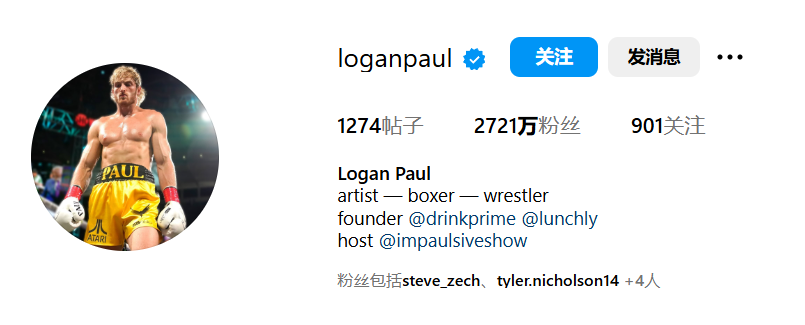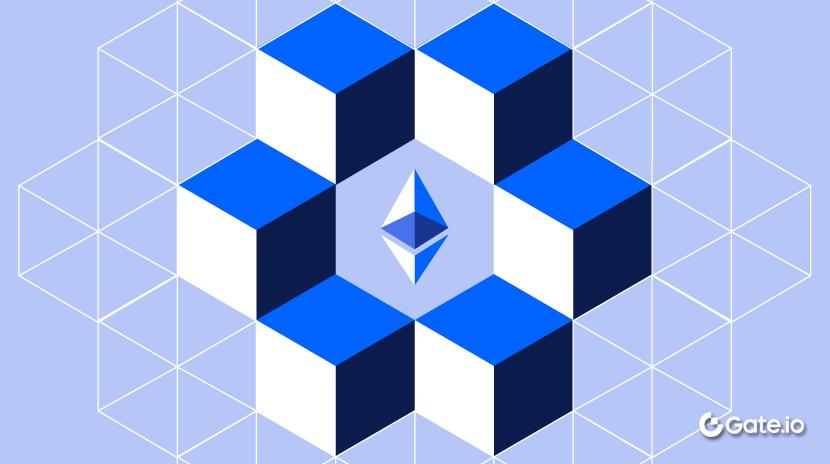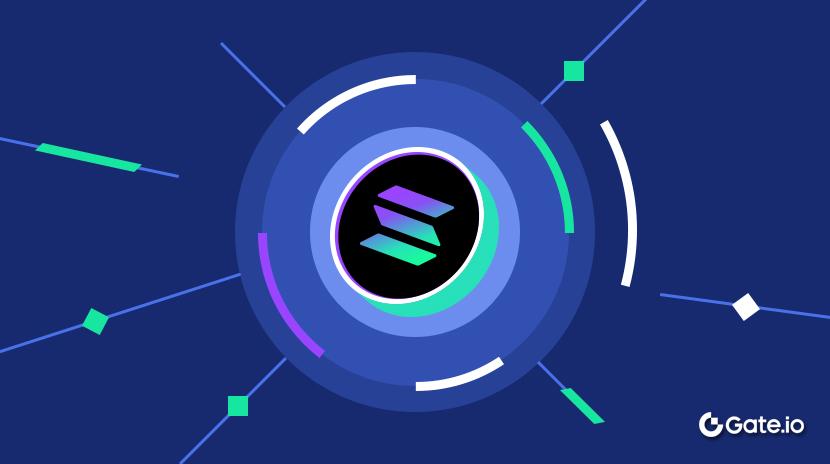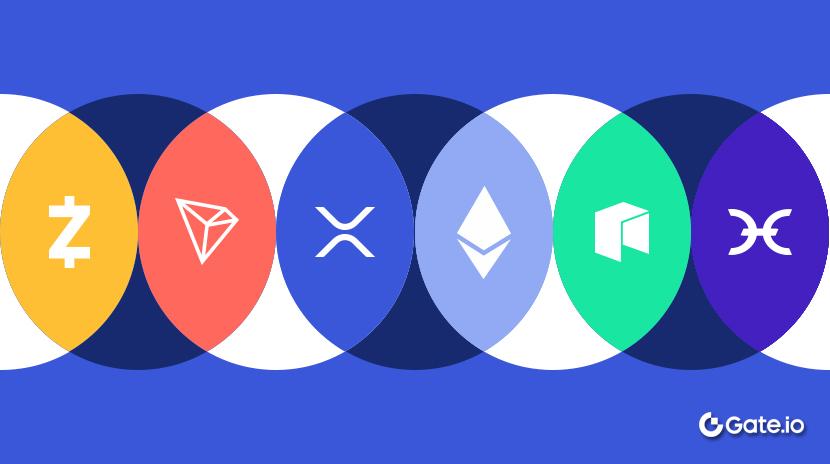Token yang Dikeluarkan oleh Selebriti: Tren Pasar, Risiko, dan Arah Masa Depan
Laporan ini menawarkan analisis komprehensif tentang token yang diterbitkan oleh selebriti. Ini menyelidiki kinerja pasar mereka, potensi investasi, tren masa depan, dan faktor-faktor yang mendasarinya sambil menawarkan cerita latar belakang komprehensif dan data pendukung.Pengantar
Dalam beberapa tahun terakhir, banyak selebriti telah memasuki ruang cryptocurrency dengan meluncurkan token pribadi atau berhubungan dengan merek mereka. Mereka memanfaatkan pengaruh mereka untuk melibatkan penggemar dan menarik investor. Token-token ini sering sejalan dengan konsep-konsep yang sedang tren seperti media sosial, NFT, dan DeFi, dan dianggap sebagai bagian dari ekonomi penggemar. Namun, tren ini juga disertai dengan spekulasi pasar, ketidakpastian regulasi, dan pertanyaan mengenai nilai sebenarnya.
Laporan ini menawarkan analisis komprehensif tentang token yang diterbitkan oleh beberapa selebriti terkenal. Ini menguji kinerja pasar mereka, potensi investasi, dan tren masa depan sambil menawarkan cerita latar belakang dan data pendukung yang komprehensif.
Ikhtisar dan Klasifikasi Token Selebriti
Token yang Diterbitkan oleh Tokoh Politik
Donald Trump – TrumpCoin (TRUMP)


Sumber: https://coinmarketcap.com
Waktu Rilis dan Latar Belakang: Pada tahun 2016, setelah kemenangan Donald Trump dalam pemilihan presiden AS, pendukungnya meluncurkan TrumpCoin (TRUMP) untuk mendukung kegiatan politiknya, meskipun Trump tidak secara resmi mendukung token tersebut. Pada tahun 2024, selama kampanye pemilihan kembali, Trump beberapa kali menyebut Bitcoin dan mata uang kripto di depan publik, yang menarik perhatian pasar.
Kinerja Pasar: Selama pemilihan presiden AS tahun 2024, TrumpCoin mengalami volatilitas signifikan, dengan token mencapai puncak tertinggi $73,94, dan kapitalisasi pasarnya sesaat melampaui $14,788 miliar. Volume perdagangan 24 jam melonjak menjadi $20,93 miliar sebelum kapitalisasi pasar turun dengan cepat karena kurangnya kasus penggunaan dunia nyata. Saat ini, kapitalisasi pasarnya sekitar $2,29 miliar, yang terutama didorong oleh berita politik.
Risiko dan Kontroversi: Nilai token erat kaitannya dengan merek pribadi Trump dan posisi politiknya, membuat kinerja pasar sangat rentan terhadap pengaruh eksternal. Selain itu, Trump hanya menyebutkan alamat kontrak token di Twitter tanpa memberikan dukungan resmi, yang telah menimbulkan kekhawatiran mengenai posisinya secara hukum dan kepatuhannya terhadap regulasi.
Melania Trump - MelaniaCoin (MELANIA)

 Sumber:https://coinmarketcap.com
Sumber:https://coinmarketcap.com
Waktu Rilis dan Latar Belakang: Pada tahun 2025, Melania Trump mengungkapkan MelaniaCoin (MELANIA), dengan tujuan utama mendanai inisiatif seni NFT pribadinya dan memajukan penyebab 'pemberdayaan wanita'. Dia dengan gigih mendukung token tersebut melalui platform media sosial untuk melibatkan kolektor dan mendapatkan dukungan.
Kinerja Pasar: Token awalnya mendapat tanggapan pasar yang baik, mencapai kapitalisasi pasar sebesar $2.05 miliar dan volume perdagangan 24 jam sebesar $4.83 miliar. Namun, ketika minat pada proyek NFT Melania meredup, popularitas token tersebut dengan cepat menurun. Saat ini, volume perdagangan harian token tersebut turun di bawah $27.97 juta, dan kapitalisasi pasarnya berada di bawah $370 juta.
Risiko dan Kontroversi: Nilai token ini erat terkait dengan popularitas koin meme dan pasar NFT. Penurunan tren koin meme dapat berdampak signifikan pada nilainya. Selain itu, beberapa analis berpendapat bahwa proyek ini lebih berfungsi sebagai strategi pemasaran politik daripada inovasi sejati dalam ruang blockchain.
Javier Milei - Token Libra
Waktu Rilis dan Latar Belakang: Pada 14 Februari 2025, Presiden Argentina Javier Milei mempromosikan sebuah cryptocurrency bernama Libra di akun media sosialnya. Diklaim bahwa proyek ini bertujuan untuk berinvestasi di UMKM dan startup Argentina untuk mendorong pertumbuhan ekonomi.
Kinerja Pasar: Dengan promosi Milei, nilai Libra melonjak dari $0.000001 menjadi $5.20 dalam waktu hanya 40 menit. Namun, para pendiri token memegang 70% dari total pasokan, dan ketika harga mencapai level tertentu, mereka tiba-tiba menjual kepemilikan mereka, yang menyebabkan harga turun drastis hingga 85%. Dalam beberapa jam, harga turun menjadi $0.99.
Risiko dan Kontroversi: Diberi label sebagai skema “rug pull”, peristiwa ini mengakibatkan kerugian signifikan bagi sekitar 74.000 investor. Hal ini memicu reaksi keras terhadap Presiden Milei. Politisi oposisi menuntut pemakzulan dan menuduhnya merusak reputasi negara. Sebagai tanggapan, Milei menghapus pos promosi dan membantah mengetahui detail proyek tersebut.
Token Selebriti di Ruang Teknologi dan Cryptocurrency
Vitalik Buterin – Ethereum (ETH)
Waktu Rilis dan Latar Belakang: Pada tahun 2015, pada usia 21 tahun, Vitalik Buterin, yang dikenal sebagai “Vitalik,” meluncurkan Ethereum—platform blockchain pertama di dunia yang dirancang untuk mendukung kontrak pintar. Visi awalnya adalah untuk membangun platform yang dapat diprogram yang melampaui fungsionalitas pembayaran dasar Bitcoin. Ethereum merevolusi lanskap blockchain. Ini membuka jalan bagi keuangan terdesentralisasi (DeFi) dan pertumbuhan ekosistem NFT.
Kinerja Pasar: Ethereum adalah cryptocurrency terbesar kedua berdasarkan kapitalisasi pasar di seluruh dunia, dengan nilai sekitar $229,3 miliar pada Maret 2025. Dengan volume perdagangan harian yang melampaui $16,7 miliar, Ethereum adalah pondasi dari ekosistem DeFi dan NFT. Upgrade Ethereum 2.0 secara signifikan meningkatkan kecepatan transaksinya dan efisiensi energinya.
Resiko dan Kontroversi: Tantangan utama Ethereum termasuk biaya gas yang tinggi dan kerentanan keamanan dalam kontrak pintar. Skalabilitas tetap menjadi perhatian, meskipun solusi Layer 2 secara progresif meningkatkan kinerja jaringan. Meskipun Vitalik Buterin tidak secara pribadi mengeluarkan token, nilai ETH erat terkait dengan posisinya dalam industri blockchain.
Changpeng Zhao (CZ) - Binance Coin (BNB)
Waktu Rilis dan Latar Belakang: Pada tahun 2017, Changpeng Zhao (CZ) memperkenalkan Binance Coin (BNB) sebagai token asli dari bursa Binance. Awalnya, dirancang untuk memberikan diskon biaya perdagangan. Seiring berjalannya waktu, BNB telah berkembang menjadi aset sentral dalam ekosistem lebih luas Binance.
Kinerja Pasar: BNB secara konsisten telah menduduki peringkat lima besar berdasarkan kapitalisasi pasar. Pada Maret 2025, kapitalisasi pasar BNB mencapai sekitar $80 miliar, dan volume perdagangan harian melebihi $2,36 miliar. BNB digunakan dalam berbagai aplikasi, termasuk DeFi, perdagangan NFT, dan Binance Smart Chain (BSC).
Risiko dan Kontroversi: Nilai BNB sangat terkait dengan stabilitas operasional Binance. Sebagai hasil dari pengawasan regulasi global, baik Binance maupun BNB menghadapi tantangan hukum dan kepatuhan, terutama di pasar seperti Amerika Serikat dan Eropa.
Token Selebriti Hiburan
Kanye West – YeezyCoin (YZY)
Tanggal Rilis dan Latar Belakang: Pada 21 Februari 2024, rapper dan perancang busana Kanye West mengumumkan rencananya untuk meluncurkan merek token pribadinya YZY. Dia bertujuan untuk mengintegrasikan musiknya, merek fashion Yeezy, dan ekosistem Web3, sehingga menciptakan ruang untuk interaksi penggemar dan partisipasi ekonomi digital.
Kinerja Pasar: Media sosial telah memicu kehebohan seputar YZY, tetapi tidak ada token resmi yang dirilis karena sikap Kanye yang tidak konsisten. Baru-baru ini, berita terkait YZY mendapatkan perhatian pasar yang cepat, dan berbagai token YZY palsu telah mendapatkan likuiditas signifikan melalui promosi media sosial.
Risiko dan Kontroversi: Kanye West telah memiliki pandangan yang berkembang tentang cryptocurrency. Dia sebelumnya mengkritik Bitcoin dan menjauhkan diri dari Web3. Pada tanggal 8 Februari, dia memposting di media sosial, menyatakan bahwa pihak ketiga tidak diizinkan untuk menggunakan akun Twitternya untuk meluncurkan token dan menekankan fokusnya semata-mata pada produk, tanpa rencana untuk merilis token. Namun, pada tanggal 21 Februari, dia membalikkan sikapnya dan mengungkapkan niatnya untuk meluncurkan token merek pribadi. Inkonsistensi ini menimbulkan keraguan tentang token YZY resmi, dan perilaku yang tidak terduga memperkenalkan risiko tambahan bagi investor, yang disarankan untuk berhati-hati.
Jeff Huang - Machi X
Tanggal Rilis dan Latar Belakang: Pada tahun 2018, musisi Taiwan Jeff Huang meluncurkan Machi X. Dia bertujuan untuk mendukung transaksi hak cipta musik dan investasi melalui teknologi blockchain.
Kinerja Pasar: Platform Machi X awalnya menggegerkan pasar Asia dan mendapatkan beberapa perhatian di tahap awalnya. Namun, karena persaingan pasar yang intens, platform menghadapi tantangan dalam pertumbuhan, dengan volume perdagangan terbatas dan keterlibatan pengguna yang rendah.
Risiko dan Kontroversi: Proyek ini menghadapi masalah dengan manajemen keuangan yang tidak jelas, operasi platform yang tidak memadai, dan upaya pemasaran, yang mengakibatkan pertumbuhan pengguna yang lambat. Investor perlu memperhatikan keberlanjutan jangka panjang proyek ini.
Anak Jeff Huang - Koin BobaCat (BOBA)

Sumber: https://x.com/bobaoppa

Sumber: https://coinmarketcap.com/
Tanggal Rilis dan Latar Belakang: Pada tahun 2024, terinspirasi oleh tren token yang dikirim ke alamat di rantai Solana, putra Jeff Huang meluncurkan BobaCat Coin. Terinspirasi oleh kucing peliharaannya, Boba, ia berharap dapat menciptakan ekosistem koin meme yang didorong oleh komunitas.
Kinerja Pasar: Pada awalnya, koin ini mendapat manfaat dari kegilaan koin meme, dengan kapitalisasi pasar melebihi $158 juta. Namun, nilainya mengalami fluktuasi yang signifikan.
Risiko dan Kontroversi: Koin ini sebagian besar didorong oleh hiruk pikuk komunitas dan kurang memiliki aplikasi praktis di dunia nyata.
Akon - Akoin (AKN)

Sumber: Kripto Akoin memulai uji coba untuk Kota Akon senilai $6 miliar di Kenya - SigmaPlay
Tanggal Rilis dan Latar Belakang: Pada tahun 2020, penyanyi terkenal Akon mengumumkan rencana untuk membuat 'Akon City' di Senegal. Dia bertujuan untuk mempromosikan pengembangan ekonomi berbasis blockchain di Afrika dan menggunakan Akoin (AKN) sebagai mata uang utama. Proyek senilai $6 miliar bermaksud untuk menciptakan sebuah metropolis yang didorong oleh kripto di mana semua kegiatan dibayar dengan Akoin.
Kinerja Pasar: Proyek ini belum memenuhi janjinya karena perkembangan infrastruktur yang lambat. Proyek ini sedang dirancang dan dibangun oleh perusahaan berbasis di AS KE International, dengan penyelesaian dijadwalkan pada tahun 2030.
Risiko dan Kontroversi: Proyek ini menghadapi berbagai tantangan, termasuk pengembangan infrastruktur dan isu regulasi. Investor sebaiknya menilai dengan hati-hati kelayakan proyek ini.
Logan Paul – CryptoZoo

Sumber: Logan Paul (@loganpaul) · Foto dan video Instagram
Tanggal Rilis dan Latar Belakang: Pada tahun 2022, YouTuber Logan Paul, dengan 27 juta pelanggan di YouTube dan 16,6 juta pengikut di TikTok, meluncurkan proyek CryptoZoo NFT. Dia bermaksud untuk menggabungkan NFT dengan mekanisme hasil untuk membangun kerajaan metaverse. CryptoZoo adalah proyek game yang memungkinkan pemain untuk membeli, membiakkan, dan memperdagangkan hewan virtual.
Kinerja Pasar: Proyek ini awalnya menarik perhatian signifikan tetapi kemudian mengakibatkan kerugian bagi investor karena masalah pelaksanaan tim dan sekarang menghadapi sengketa hukum.
Risiko dan Kontroversi: Kurangnya transparansi dan kegagalan proyek telah merusak kepercayaan investor.
Token Penggemar Klub Sepak Bola
Dengan blockchain terintegrasi dengan industri olahraga, token penggemar telah menjadi komponen penting yang semakin penting dari ekonomi penggemar. Berikut adalah beberapa token penggemar yang telah mencuat di pasar. Mereka menawarkan penggemar lebih banyak kesempatan untuk berinteraksi dan menarik minat investor.
Token Perwakilan:
- Chiliz (CHZ)
Sebagai pelopor dalam ruang token penggemar, Chiliz menyediakan solusi blockchain untuk banyak klub olahraga. Tokennya CHZ sentral dalam ekosistem dan memiliki kapitalisasi pasar sebesar $1.5 miliar, dengan volume perdagangan 24 jam sebesar $200 juta. Harga saat ini adalah $0.25, menunjukkan kenaikan baru-baru ini sebesar 5.2%. Pengakuan pasar tinggi.
- Token Penggemar FC Barcelona (BAR)
Token penggemar Barcelona, BAR, menawarkan manfaat eksklusif dan hak suara bagi para penggemar. Dengan basis penggemar global klub yang besar, token ini memiliki kapitalisasi pasar sekitar $80 juta, volume perdagangan harian $10 juta, dan harga saat ini $15.00, mencerminkan peningkatan sebesar 3.8% baru-baru ini.
- Token Penggemar Paris Saint-Germain (PSG)
Token penggemar resmi PSG, PSG, memungkinkan penggemar untuk berpartisipasi dalam keputusan klub. Ini memiliki kapitalisasi pasar sekitar $70 juta, volume perdagangan 24 jam sebesar $8,5 juta, dan harga saat ini sebesar $14,00, menunjukkan peningkatan sebesar 4,1%.
- Token Penggemar Manchester City (CITY)
Token penggemar resmi Manchester City, CITY, bertujuan untuk meningkatkan interaksi penggemar dengan klub. Kapitalisasi pasar adalah $65 juta, dengan volume perdagangan 24 jam sebesar $7,8 juta, dan harga saat ini adalah $13,50, menunjukkan peningkatan 3,5%.
- Juventus Fan Token (JUV)
Token penggemar resmi Juventus, JUV, memungkinkan penggemar untuk terlibat lebih dalam dengan urusan klub. Ini memiliki kapitalisasi pasar sebesar $60 juta, volume perdagangan harian sebesar $7,2 juta, dan harga saat ini sebesar $12,00, dengan peningkatan 2,9% baru-baru ini.
- Token Penggemar AC Milan (ACM)
Token penggemar AC Milan, ACM, mewakili kekuatan merek dari tim merah dan hitam ikonik Italia. Kapitalisasi pasar adalah $55 juta, volume perdagangan 24 jam sebesar $6,5 juta, dan harga saat ini sebesar $11,00, dengan kenaikan terbaru sebesar 3,2%.
- Token Penggemar Inter Milan (INTER)
Token suporter Inter Milan, INTER, memiliki kapitalisasi pasar sebesar $50 juta, dengan volume perdagangan 24 jam sebesar $6 juta dan harga saat ini sebesar $10,50, mencerminkan kenaikan sebesar 4,0%.
- Token Penggemar Arsenal (AFC)
Token penggemar resmi Arsenal, AFC, memiliki pengikut pasar yang tinggi karena ketenaran tradisional klub di Premier League. Kapitalisasi pasar adalah $45 juta, dengan volume perdagangan 24 jam sebesar $5,5 juta, dan harga saat ini sebesar $9,50, naik 3,6%.
- Token Penggemar Santos FC (SANTOS)
Token penggemar Santos FC, SANTOS, erat terkait dengan sejarah legendaris klub. Kapitalisasi pasar adalah $40 juta, dengan volume perdagangan 24 jam sebesar $5 juta, dan harga saat ini adalah $8,00, menunjukkan peningkatan 2,5%.
- Lazio Fan Token (LAZIO)
Token suporter Lazio, LAZIO, memanfaatkan pengaruh klub di Serie A untuk menarik keterlibatan penggemar. Ini memiliki kapitalisasi pasar sebesar $35 juta, dengan volume perdagangan 24 jam sebesar $4,5 juta dan harga sebesar $7,50, menunjukkan peningkatan sebesar 3,1%.
- Token Penggemar FC Porto (PORTO)
Token penggemar resmi Porto, PORTO, memiliki kapitalisasi pasar sebesar $30 juta, dengan volume perdagangan 24 jam sebesar $4 juta dan harga saat ini sebesar $6.50, mencerminkan peningkatan sebesar 2.8%.
- Token Penggemar Galatasaray (GAL)
Token penggemar Galatasaray, GAL, meningkatkan interaksi penggemar dan menunjukkan ketahanan di pasar. Ini memiliki kapitalisasi pasar sebesar $25 juta, dengan volume perdagangan 24 jam sebesar $3,5 juta dan harga saat ini sebesar $5,50, mencerminkan kenaikan 3,0%.
- Token Suporter AS Roma (ASR)
Token penggemar resmi AS Roma, ASR, memberikan cara baru bagi penggemar untuk terlibat dengan klub. Ini memiliki kapitalisasi pasar sebesar $20 juta, dengan volume perdagangan 24 jam sebesar $3 juta dan harga saat ini sebesar $4.50, menunjukkan kenaikan sebesar 2.7%.
- Argentine Football Association Fan Token ($ARG)
Token penggemar Asosiasi Sepak Bola Argentina, $ARG, memungkinkan penggemar untuk langsung berpartisipasi dalam kegiatan tim nasional. Ini memiliki kapitalisasi pasar sebesar $15 juta, dengan volume perdagangan 24 jam sebesar $2,5 juta dan harga saat ini sebesar $3,50, mencerminkan kenaikan sebesar 2,3%.

Kinerja Pasar: Token-token ini memberikan pemegang hak suara dan manfaat eksklusif, dengan total kapitalisasi pasar melebihi $1 miliar, namun sangat fluktuatif. Berbagai faktor, termasuk kinerja tim, sentimen pasar, dan kemitraan memengaruhi kinerja pasar token penggemar.
Risiko dan Kontroversi: Nilai utama token penggemar terletak pada interaksi sosial daripada pengembalian investasi. Mereka sangat rentan terhadap risiko spekulasi jangka pendek. Oleh karena itu, saat berinvestasi dalam token seperti itu, penting untuk menggabungkan analisis fundamental dengan tren pasar untuk menilai nilai potensial mereka secara lebih komprehensif.
Milestones Pengembangan Kunci (Analisis Timeline)
Pertumbuhan pasar token penggemar sangat terkait dengan peristiwa kunci, terutama kemitraan besar, peningkatan teknologi, atau ekspansi pasar. Berikut adalah timeline perkembangan untuk Chiliz dan beberapa proyek token penggemar perwakilan, beserta dampak dari peristiwa-peristiwa ini terhadap harga token:

Dari analisis timeline, jelas bahwa kemitraan utama dan peningkatan teknologi adalah pendorong utama pertumbuhan pasar token penggemar, sementara siklus pasar secara keseluruhan dan volatilitas pasar cryptocurrency juga secara signifikan memengaruhi pergerakan harga.
Perbandingan Model Bisnis: Olahraga vs Hiburan Fan Token
Saat ini, token penggemar terutama dibagi menjadi dua kategori: token penggemar olahraga dan token penggemar hiburan. Perbedaan tertentu ada dalam model bisnis, metode penghasilan, dan basis pengguna mereka.

Model Aliran Kas Token Fan
Nilai inti dari token penggemar terletak pada kemampuan dukungan aliran kas mereka. Di bawah ini adalah model aliran kas untuk token penggemar olahraga. Ini menunjukkan bagaimana klub menghasilkan pendapatan melalui ekosistem token.
Model Pendapatan Token Penggemar

Prospek untuk Fan Tokens dan Sports Tokens:
Kemitraan utama dan kemajuan teknologi mendorong pertumbuhan pasar token penggemar. Proyek seperti Chiliz akan terus membentuk tren pasar saat mereka berkembang.
Token penggemar olahraga mendapat manfaat dari aliran kas yang lebih stabil dan semakin menarik investor institusi, sedangkan token penggemar hiburan tetap didorong oleh ekonomi berbasis penggemar, yang mengakibatkan volatilitas pasar yang lebih besar.
Dengan model aliran kas yang jelas, jelas bahwa token penggemar bukan hanya sebagai sarana untuk investasi emosional tetapi juga memiliki nilai komersial tertentu. Mereka menciptakan aliran pendapatan baru untuk klub dan seniman.
Di masa depan, ketika ekosistem Web3 terus mengintegrasikan, token penggemar dapat menemukan area pertumbuhan baru dalam tata kelola DAO, interaksi NFT, dan aplikasi metaverse, dan menawarkan potensi pengembangan yang lebih besar bagi seluruh pasar.
Nilai Investasi dan Analisis Risiko
Nilai Investasi
Pengembangan masa depan token selebriti akan bergantung pada skenario aplikasi dan penerimaan pasar. Investor harus fokus pada poin-poin berikut:
- Skenario Aplikasi Praktis: Nilai jangka panjang dari sebuah token tergantung pada ekosistem yang berkelanjutan.
- Pengaruh Jangka Panjang Selebriti: Pengaruh selebriti dapat secara signifikan memengaruhi permintaan akan token.
- Pasar Penggemar: Beberapa token selebriti, seperti konten eksklusif dan hak pilih, dapat digunakan untuk interaksi penggemar. Mereka membawa nilai-nilai komunitas tertentu.
- Integrasi NFT dan Metaverse: Di masa depan, token selebriti mungkin akan digabungkan dengan NFT dan metaverse untuk menciptakan model bisnis baru.
- Ekstensi Merek: Token selebriti dengan efek merek yang kuat dan ekosistem yang mapan, seperti token penggemar olahraga, mungkin memiliki potensi investasi.
Risiko Utama
Pasar token selebriti menawarkan peluang dan membawa risiko tinggi. Investor perlu menilai dengan hati-hati:
- Risiko Spekulasi Pasar: Banyak token selebriti kurang memiliki skenario aplikasi nyata, dan harganya sangat fluktuatif. Mereka dapat dengan mudah terpengaruh oleh spekulasi.
- Risiko Penipuan dan Rug Pull: Beberapa proyek token selebriti memiliki tingkat transparansi yang rendah, sehingga investor harus memilih dengan hati-hati.
- Ketidakpastian Regulasi: Saat kebijakan regulasi semakin ketat, token selebriti mungkin menghadapi tantangan hukum dan kepatuhan.
Tren Pengembangan Masa Depan
Pengembangan Kepatuhan
Kepatuhan akan menjadi faktor kunci dalam menentukan pengembangan berkelanjutan token selebriti. Saat lingkungan regulasi global semakin ketat, token-token ini mungkin perlu patuh pada regulasi sekuritas yang lebih ketat untuk menghindari diklasifikasikan sebagai sekuritas tidak terdaftar. Beberapa proyek juga mungkin beralih ke model ekonomi token yang lebih patuh, seperti Penawaran Token Sekuritas (STO) untuk meningkatkan legitimasi pasar dan kepercayaan investor dengan melakukan penggalangan dana secara teratur.
Komisi Sekuritas dan Bursa Amerika Serikat (SEC) telah menyelidiki beberapa token selebriti, dengan fokus inti pada apakah mereka melibatkan sekuritas, terutama ketika token melibatkan komitmen investasi dan pengembalian yang diharapkan. Selain itu, "Regulasi Pasar Aset Kripto" Eropa (MiCA), yang mulai berlaku pada tahun 2023, akan berdampak besar pada token penggemar dan token selebriti. Ini mencakup stablecoin, platform perdagangan, dan jenis cryptocurrency lainnya. Ini mengharuskan proyek-proyek untuk melakukan penyesuaian kepatuhan yang lebih ketat terkait transparansi, audit keuangan, dan perlindungan pengguna.
Integrasi Mendalam dengan Web3
Dengan perkembangan pesat teknologi blockchain, token selebriti secara bertahap menjelajahi integrasi mendalam dengan ekosistem Web3 untuk memperluas lebih banyak skenario aplikasi dan nilai komersial. Misalnya:
- Organisasi Otonomi Terdesentralisasi (DAO): Token penggemar dapat digunakan untuk tata kelola komunitas. Mereka memungkinkan pemegang untuk memilih hal-hal yang berkaitan dengan tim atau selebriti, seperti musik pintu masuk pertandingan, desain jersey, dll., Sehingga meningkatkan interaksi pengguna dan rasa memiliki.
- NFT dan Aset Digital: Di masa depan, token selebriti dapat berintegrasi dengan NFT untuk hak penggemar eksklusif, seperti memorabilia edisi terbatas, tiket temu sapa virtual, dll., yang meningkatkan utilitas dan nilai token.
- Aplikasi Metaverse: Dengan munculnya metaverse, token selebriti bisa muncul sebagai aset kunci dalam ekonomi virtual. Mereka akan memudahkan pembelian koleksi digital, akses ke konser virtual, dan partisipasi dalam acara olahraga—meningkatkan baik utilitas maupun nilai ekosistem mereka.
Investasi Institusional
Meskipun token penggemar awalnya ditujukan untuk pengguna individu dan komunitas penggemar, potensi pasar mereka kini semakin menarik dana institusi lebih banyak. Terutama dalam kasus token penggemar olahraga, didukung oleh efek merek klub, operasi bisnis yang stabil, dan basis penggemar yang besar, mereka secara bertahap diakui karena nilainya dalam jangka panjang. Trend ini mungkin akan mengakibatkan dampak-dampak berikut:
- Institutional Investors Masuk ke Pasar: Sebagian dana, dana lindung nilai, atau lembaga investasi industri olahraga mungkin mengalokasikan sebagian aset mereka ke token penggemar sebagai bagian dari portofolio investasi yang terdiversifikasi.
- Likuiditas Pasar Ditingkatkan: Masuknya investor institusi akan memberikan dukungan keuangan yang lebih kuat, yang membuat perdagangan pasar lebih aktif dan mengurangi volatilitas pasar yang disebabkan oleh fluktuasi sentimen investor individual.
- Standardisasi Proyek: Investor institusional cenderung berinvestasi di proyek yang lebih patuh dengan struktur tata kelola yang mapan, yang mungkin mendorong proyek token penggemar untuk meningkatkan transparansi manajemen keuangan, meningkatkan pengungkapan pasar, dan meningkatkan standar industri.
Kesimpulan
Token selebriti, sebagai tren yang muncul di pasar cryptocurrency, memperlihatkan potensi gabungan ekonomi penggemar dengan teknologi blockchain. Namun, pasar masih dalam tahap awal, dengan risiko spekulatif tinggi dan ketidakpastian regulasi. Ketika berpartisipasi dalam token tersebut, investor sebaiknya fokus pada kemampuan implementasi proyek yang sebenarnya, model ekonomi, kepatuhan, dan nilai merek jangka panjang selebriti untuk mengurangi risiko investasi.
Artikel Terkait

Bagaimana Mempertaruhkan ETH?

Apa itu Fartcoin? Semua yang Perlu Anda Ketahui Tentang FARTCOIN

Top 10 Platform Perdagangan Koin Meme

Apa itu Solana?

Apa itu Altcoin?

